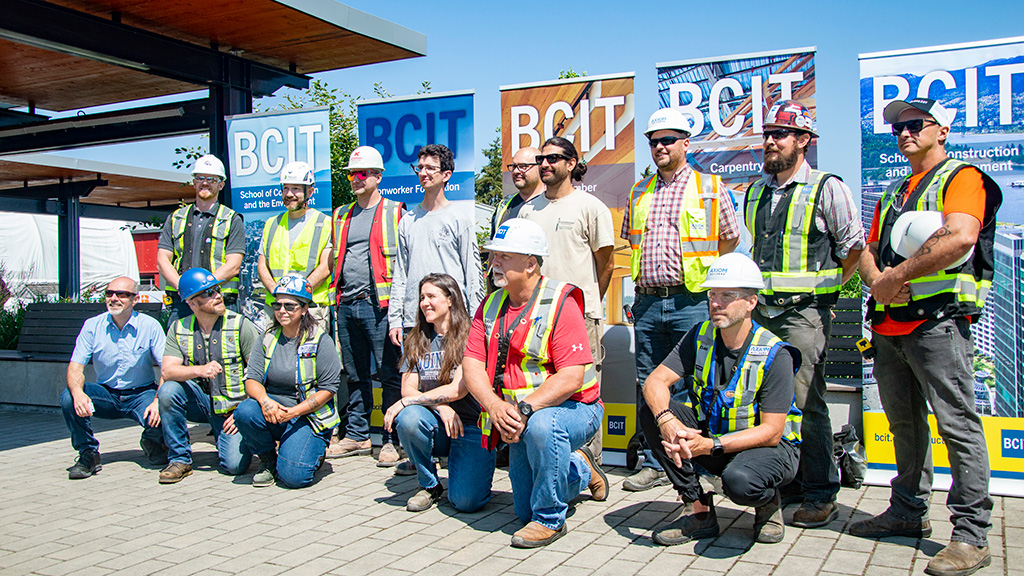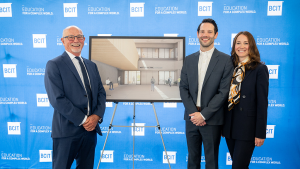The British Columbia Institute of Technology (BCIT) is looking to the future with the implementation of its new mass timber construction certificate, the first of its kind.
“I was already pursuing mass timber in my career and this is pretty much the only real credential source in North America,” Nick Skaperdas, student in the program and founder and managing director of Washington, D.C.-based Tekton Structures, told the Journal of Commerce.
BCIT’s Associate Certificate in Construction of Mass Timber Structures program launched in January. The program aims to teach students the technical, practical and problem-solving skills needed to interact with and oversee mass timber construction.
The program runs from January to June and can be completed entirely online except for one two-week practicum course at BCIT’s Burnaby campus.
At an event on June 27, Skaperdas said the program offers a great amount of freedom to explore and understand the various aspects of mass timber beyond the constraints of working on an actual jobsite.
“This opportunity is a sandbox. It’s irresponsible for me to play around and experiment on my own jobs, on the schedule of a general contractor or owner. But this is an opportunity to experiment with different connections, experiment with different rigging approaches, to take it slow and learn and possibly push the boundaries of the science,” Skaperdas said.
Dean of BCIT’s School of Construction and the Environment Wayne Hand said introducing the program is important for the industry.
“I’m most excited to see, as with any program that we offer, industry engagement and the industry sending their employees through the programming. That really validates the fact that it is needed,” Hand said.
He emphasized training around mass timber construction encompasses a wide range of trades, skills and workers.
Steve Moore, senior superintendent with Ledcor, was at the event to see what the program was like in case Ledcor wants to send employees through it. He also said the need to train a wide variety of trades on how they interact with modular mass timber buildings is essential.
“A lot of the projects we do are a mix between mass timber and steel. So, getting those ironworker trades in and trained up so there’s some synergies between who’s doing what is important,” he said.
Lots of decisions still need to be made in terms of how workforces will be designated when it comes to mass timber construction, he added.
“Who’s going to be doing the installing? Will it be a specialized mass timber install crew or the carpentry union?”
BCIT’s new program fills an essential training gap.
“There’s no education about how to do mass timber except for this. It’s the first step to getting people engaged,” said Moore.
The current class consists of 16 students with various levels of experience and backgrounds in construction and the trades.
“Some of them have never erected a building and don’t come from backgrounds where they’re working heavy construction,” Mike McKoryk, steel trades department head at BCIT and one of the mass timber program instructors, told the JOC.
That made it easy for McKoryk to know where the lessons needed to start.
“Right off the top, we’re emphasizing safety. We go through fall protection plans, we go through rigging plans, we go through our site safety plans,” he said.
“And then we’re working on basic building construction methodology. If they’re used to light frame residential, well, this is a totally different animal.”
He said one of the challenging things about teaching mass building construction to people with a construction background is how methodical erection needs to be as most buildings are prefabricated.
“Some of the feedback we’ve gotten so far was students were surprised at the amount of detail in the blueprints,” he said.
“Finding details about how many fasteners need to go in, what type of fasteners, what kind of driver, do I need to install this or that? There’s so many layers to it,” he said.
But there’s still room for personal knowledge and creative thinking application.
“There are many sections where the drawing doesn’t tell you how to pick something up, whether it’s horizontally or vertically.”
Associate dean Steven Kuan said mass timber has solidified itself as a major part of the future of construction.
“I think mass timber is going to be the catalyst for a cultural shift in the industry and especially in building construction because it’s a new way of doing things, new products, and a lot of different skills are involved even from an understanding and planning point of view,” Kuan said.
“Mass timber is going to be here for a long time.”








Recent Comments